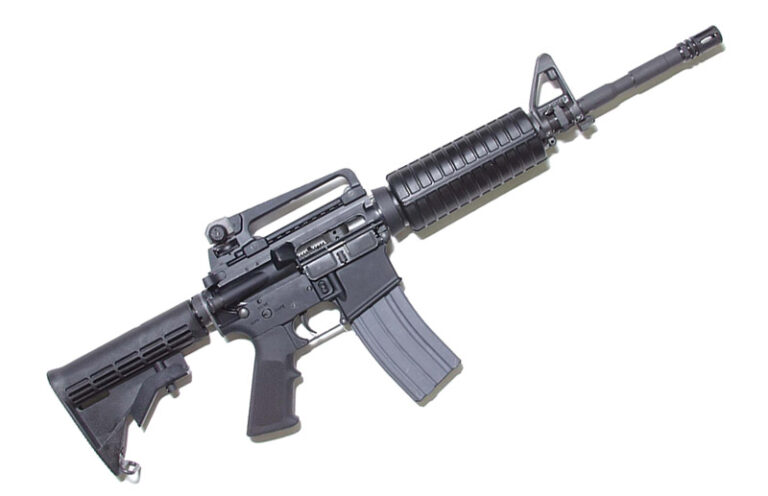
The M4 carbine is arguably the best all-around fighting rifle ever made, so here we’re looking at exactly how it came to be.
Officially adopted in 1994, the M4 carbine has only been gaining steam on the global stage ever since. Designated as Carbine, Caliber 5.56 mm, M4, the weapon has since been adopted by dozens of different nations and armed groups around the world.
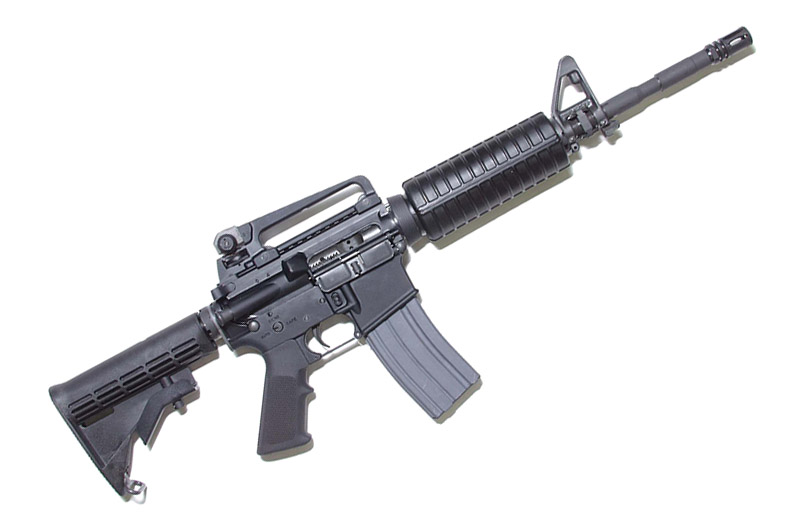
From militaries and police organizations to non-state actors and armed citizens, the M4-pattern of AR-15 has become enormously popular. Even with more modern offerings now commonly available, many Americans still choose a close facsimile of the M4 when selecting a semi-auto AR-15 to purchase.
Despite plans in place to officially replace the M4 with the new Sig Sauer MCX Spear rifle, most believe that the M4 will see frontline service for many years to come. Some of that is due to the logistical difficulties of completely reequipping the U.S. Army, but some of it is due to the belief that the compact, lightweight and battle-proven carbine will still serve a practical role in the military’s diverse toolbox. Regardless of how superior the ballistics of Sig’s newfangled cartridge are when compared to 5.56 NATO, there will still be some missions where smaller is better.
So, let’s talk about exactly what made the M4 carbine so great as well as a few of the best civilian-legal approximations on the market.
Why Is The M4 Called A Carbine?
Military use of carbines—shorter, lighter, handier and (often) smaller-caliber rifles—dates back centuries. Historically, these were typically issued to cavalry troops who needed less cumbersome versions of infantry rifles for use on horseback.
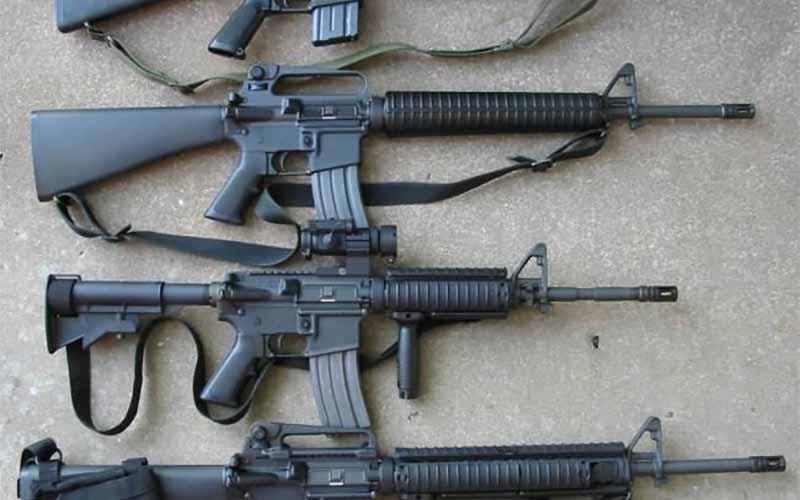
Based on the success of the M1 Carbine in WWII, the U.S. Military requested a carbine variant of the M16 almost immediately after its adoption in 1964.
The first attempts to miniaturize the M16 were the Colt 607 and the Colt 605 (the “Dissipator,” though it was never actually called that). The 605 was identical to the standard M16 in most aspects besides its cut-down 15-inch barrel, but the 607 was more radically modified. It featured a cut-down 10-inch barrel with a shortened handguard to match, an early-generation collapsing buttstock (again made from a modified standard M16 stock) and a moderator on the muzzle. Looking at the changes made to the 607, it starts to become clear just how the M16 evolved into the M4 carbine.

The Colt 607 and 605 saw use in the early years of the war in Vietnam, but both experienced several problems as well, mostly related to reliability in full-auto fire. This is because the shorter barrel decreases the dwell time, leading to cycling issues.
To solve those problems, Colt started work on the XM177, aka the Colt Commando series.
The first versions were the Colt 609/XM177E1 and the Colt 610/XM177 (the only notable difference being the inclusion of a forward-assist on the 609), and they featured 10-inch barrels, a new design of adjustable two-position stock, new purpose-built handguards and a redesigned moderator muzzle device. The moderator, now 4.5 inches rather than 3.5 inches as on the 607, accomplished two important things. Firstly, it increased back pressure to enhance reliability, and secondly, it reduced the report of the rifle to that of about a standard, full-length M16.
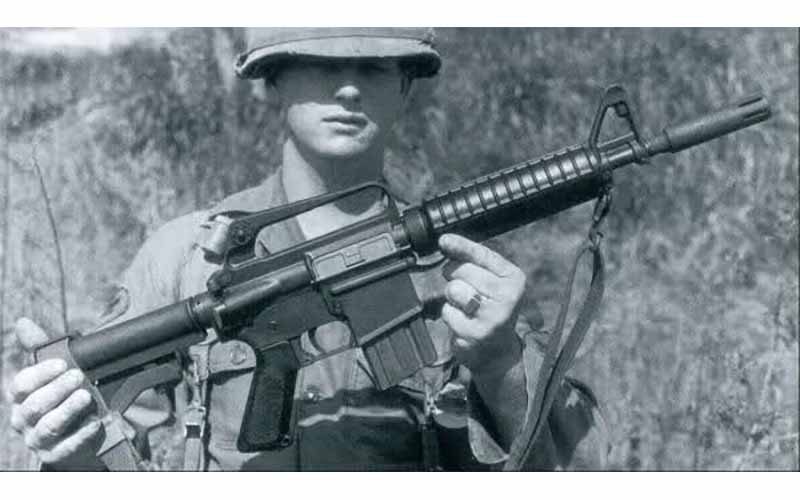
The first batch of XM177E1 carbines was reportedly delivered to U.S. Special Forces in 1967 (although some experimental designs like the 607 were sent to be tested in-country beforehand). Presumably due to continued reliability issues, the XM177E2 was developed shortly after this. This version was essentially the same as its predecessor but was now sporting an 11.5-inch barrel for improved reliability.
While the term was originally coined by Colt, CAR-15 has become the generic and collective designation for this whole family of early carbine-length AR-15s. They quickly became a mainstay of Vietnam-era special forces such as MACV-SOG, likely contributing to their early-formed reputation as “cool guy” guns. While very effective, and certainly an improvement in many respects over the standard M16, the XM177E2 still wasn’t perfect. The moderator was easily fouled and near impossible to clean, the guns had trouble stabilizing tracer rounds and they obviously had shorter effective ranges and worse ballistics than their 20-inch counterparts.
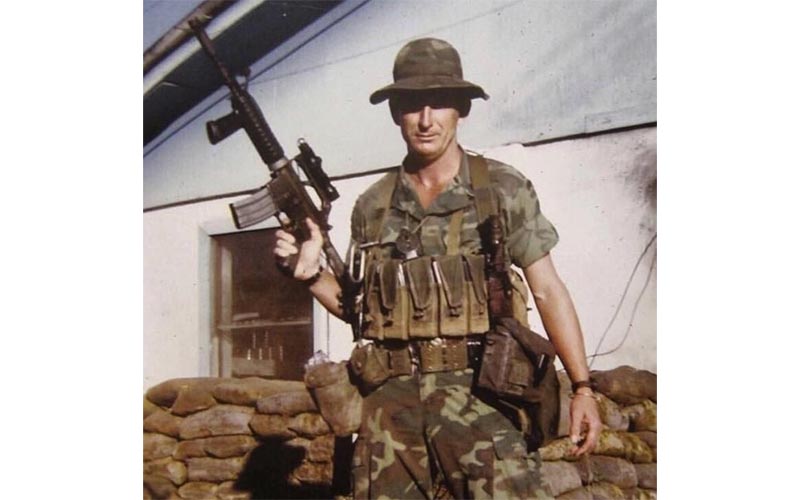
Regardless, these were the guns that would eventually lead to the M4 carbine.
XM4 To M4
After the adoption of the M16A2, the military requested a new CAR-15 for special forces and units that would benefit from a more compact weapon.
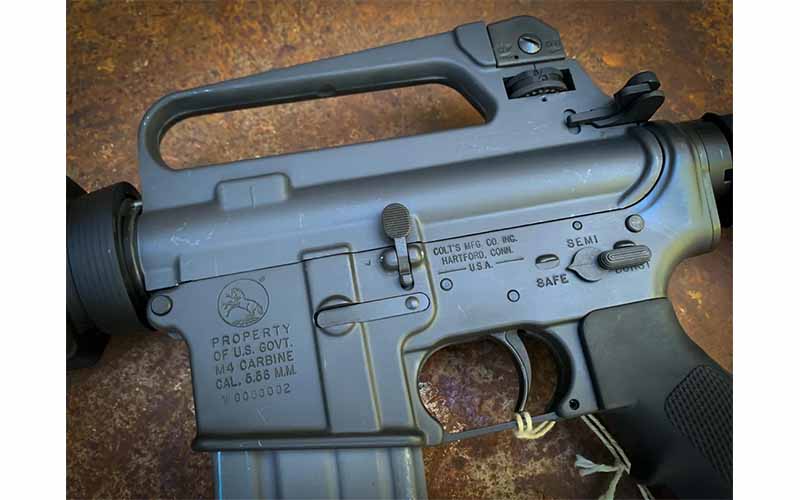
Initially designated as the XM4 during its development, the carbine used the two-position adjustable stock of the XM177 series with an A2-profile barrel and a 1:7 twist for the newly adopted M855 ammunition. The barrel was lengthened to 14.5 inches (with a carbine-length gas system) and given an A2 birdcage flash hider. The very first M4s delivered even still had fixed M16A2 carry handle uppers, but these were quickly replaced by the flat-top Picatinny upper that the M4 would become known for. These would be issued with both detachable carry handle rear iron sights as well as optics like the ACOG.
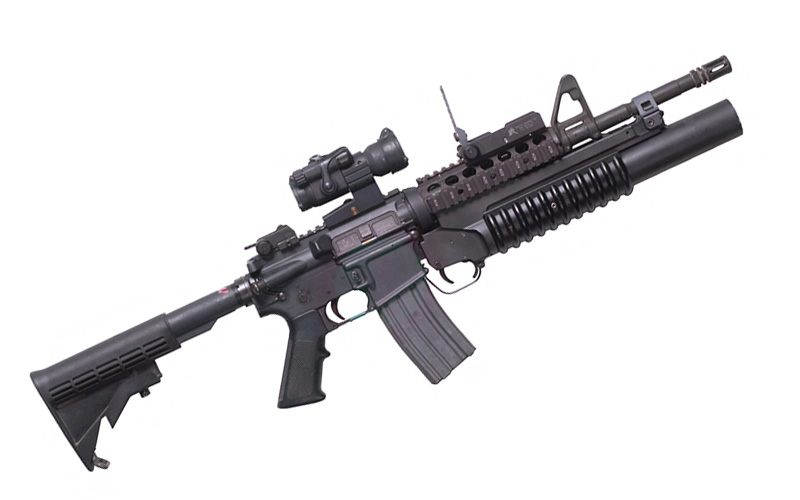
After development of the XM4 was considered to be completed in 1987, the Marine Corps was the first to approve and adopt the carbine’s use (although in limited numbers). This was also the first time the experimental XM4 was officially designated as the M4.
Despite this, 1994 is generally accepted as the year that the M4 carbine was officially adopted by the Department of Defense.
The M4 Carbine Is Born
While the Marines were early to the party, the Army didn’t request any M4 carbines until 1993. This decision is typically attributed to experience gained during Operation Desert Storm where many infantrymen complained about the M16A2 being cumbersome in urban environments. This was reinforced during the 1993 Battle of Mogadishu where Delta Force members seemed far happier with their CAR-15s than others did with full-length rifles. All this contributed to the increased use of the M4 across all U.S. Armed Forces until it eventually replaced the M16 as the standard infantry weapon for most branches. This replacement began happening in practice long before the decision to do so was made official, which for the Army was in 2010.
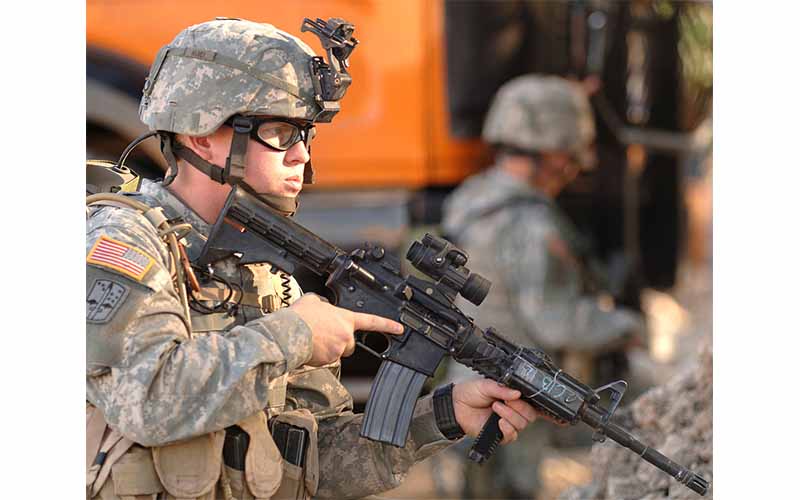
By the time it was adopted, the M4 had undergone a few more changes to its design since the XM4 was deemed completed. Most significantly, the fixed carry handle upper was replaced with the now-standard flat-top model that features a Picatinny rail for optics.
Additionally, the stock detent channel was milled for two additional stock positions, allowing for more adjustability of the length of pull. This was likely inspired by what some Delta Force operators had done with their Colt 723s. The 1:7 twist was retained, as was the three-round burst capability (standard for the M16A2) instead of full auto. A heavier buffer was also developed for improved reliability and the polymer furniture was minorly altered from the older CAR-15 style.
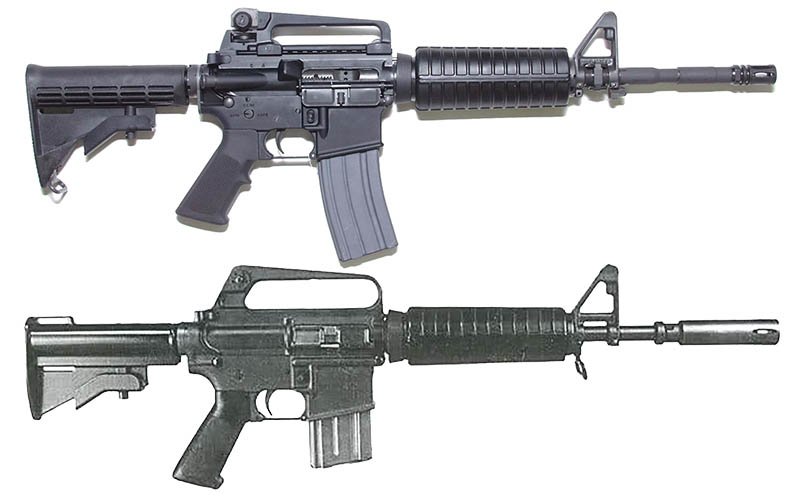
Finally, the barrel profile was changed to the M4/HBAR profile, with a ring machined into the barrel to mount the M203 grenade launcher.
The last iteration of the M4 we’ll cover here is the M4A1, developed for USSOCOM. Besides an optional new barrel profile that would better tolerate heat stress from full-auto fire, the only significant change was the replacement of three-round burst with true full-auto functionality. Further development on the M4 platform mostly took place through accessory programs such as SOPMOD (Special Operations Peculiar Modification) kits.
The M4 Carbine Enters Service
After the DoD officially adopted the M4 and M4A1 in 1994, their use quickly started to eclipse that of the M16A2. With the exception of the Marines, the M4 became America’s de facto service rifle for most of the Global War on Terrorism.
Besides the United States, dozens of other countries have purchased M4 or M4A1 Carbines either for specialist roles (such as special forces, national police and counter-terrorism units) or wholesale for use as their primary service rifle.
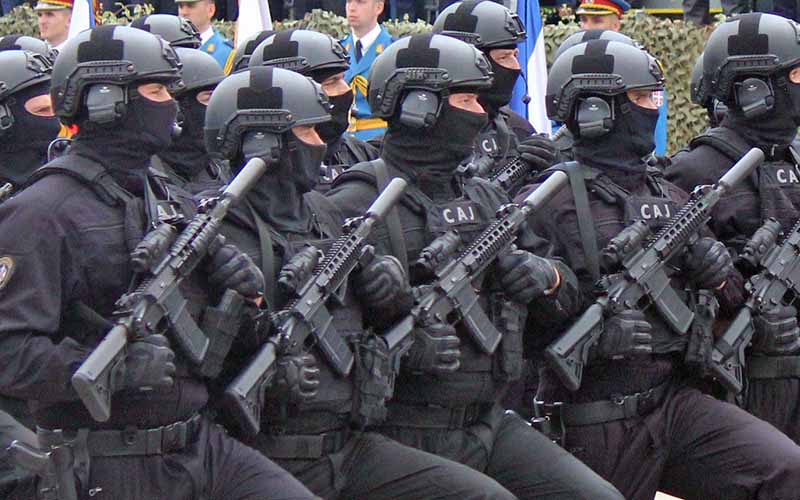
Police units and militaries around the world have found the M4 carbine to live up to its billing as a light, handy, versatile rifle that can fit multiple roles with aplomb.
The early international adopters took their first shipments in the late 1990s, with new international contracts being signed and completed even in the past few years as of this writing. Almost every NATO country has had them in their armories, and most U.S. allies have been outfitted with some amount of M4 carbines at various points.
FN Takes Over: The M4 Goes Open Source
By 2009, the US military had acquired the patents and copyrights to everything related to the M4 carbine, so it opened bidding to find a new supplier.
Colt has had a long history of troubled finances, having gone through bankruptcies and reorganizations several times. The military knew this, of course, as it was hardly a secret that military contracts were essentially the only thing propping up Colt's mortal remains.
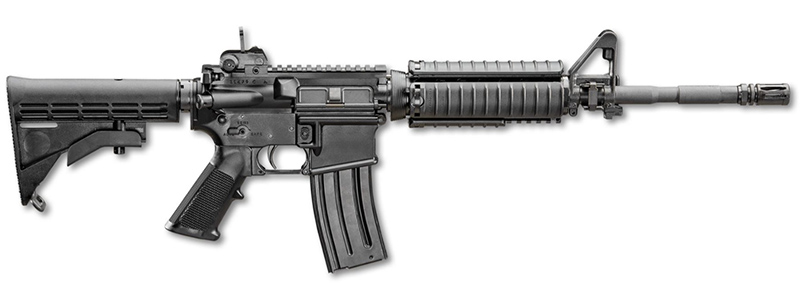
They put out requests for proposals to find other suppliers. While a number of companies were awarded contracts to build M4 carbines after 2009 (Colt and Remington included), the bulk of production would be awarded to Fabrique Nationale Herstal of Belgium.
FN would manufacture the bulk of M4 and M4A1 carbines from 2013 to 2018, as well as parts for converting M4s to M4A1s.
The Legacy Of The M4 Carbine
As mentioned, U.S. Army brass has already decided to formally replace the M4 with what is currently being referred to as the XM7. This, however, does not mean that the M4 will disappear overnight.
With so many carbines and so much ammo already in inventory, it’s a safe bet to say that the M4 will continue to see at least rear-echelon service by various U.S. Armed Forces for many years to come. Outside of the U.S., almost certainly even longer. The AR-15 platform has now established itself on the world stage almost as solidly as the Kalashnikov, and the M4 seems to be the most preferred version by users around the globe. It’s not going anywhere anytime soon.
The Top 5 M4 Carbine Clones
FN 15 Military Collector M4 Carbine
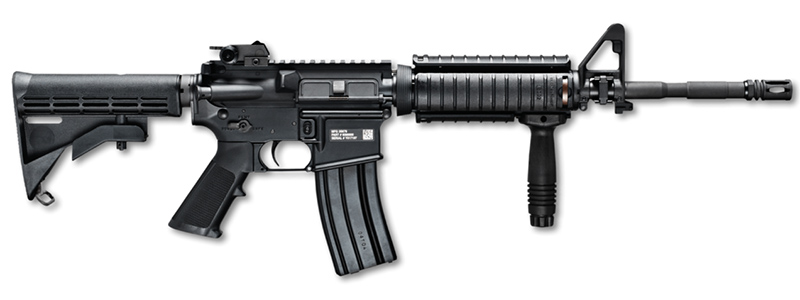
It's an FN M4 Carbine made for the civilian market, so this is as clone-correct as it gets. The 14.7-inch barrel has a pinned and welded A2 birdcage, and the rifle includes an ambidextrous selector switch, a folding rear sight and a Knight's Armament RIS quad rail.
MSRP is $1,929, which is stiff to be sure…but it's as close as you can get to the real thing without being a Class III dealer.
Palmetto State Armory Nitride M4 Carbine

Say what you want about PSA, but lately it seems that the company has been churning out lots of decent firearms for affordable prices. Sure, PSA's Nitride M4 won't be as nice or as clone-correct as some others on this list, but it will get you pretty damn close for not much money. This rifle features a nitrided, 16-inch M4-profile barrel, a mil-spec bolt carrier group and standard polymer M4 furniture.
To complete the classic, standard M4 look, it even comes with a detachable carry handle rear sight. MSRP is technically $899.99, but it's frequently on sale for $499.99.
Colt M4A1 SOCOM Carbine

Much like the FN 15, Colt offers a version of the M4 for the civilian market. Everything is the same spec, save for a pinned and welded 14.5-inch barrel and a semi-auto trigger pack. A Knight's Armament RIS rail and flip-up rear sight (along with fixed front sight base) are included, along with one magazine.
MSRP is $1,499. However, you can also get into a genuine Colt for less by opting for the standard M4 Carbine model, which has a ribbed handguard, Magpul BUI rear sight and a 16-inch barrel for about $400 less.
Smith & Wesson M&P Sport II
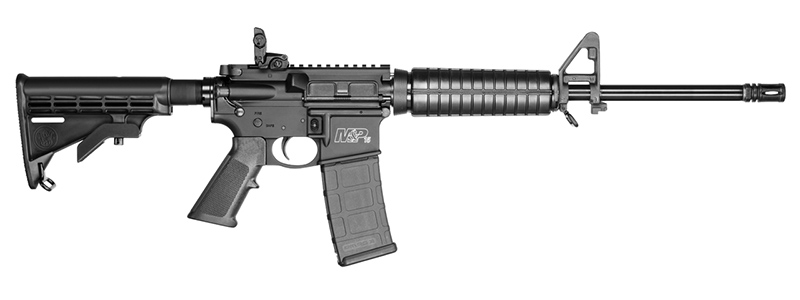
The M&P Sport II is not quite clone-correct, but it's close enough for someone looking for a decent M4-like rifle that won't completely break the bank. The M&P Sport II comes with a straight-profile 16-inch 4140 chrome-moly barrel with an A2 birdcage flash hider, a flat-top receiver (with Magpul BUI rear sight), polymer furniture and a fixed front sight base. While the stock and pistol grip are the same pattern as the real M4 carbine, the handguard is interestingly skinnier and more reminiscent of the old CAR-15 style.
It is one of the most popular AR-15s on the market, is available just about everywhere (except for ban states) and has a very attainable MSRP of $812 with street prices typically being even lower.
Bravo Company M4 Carbine Mod 2
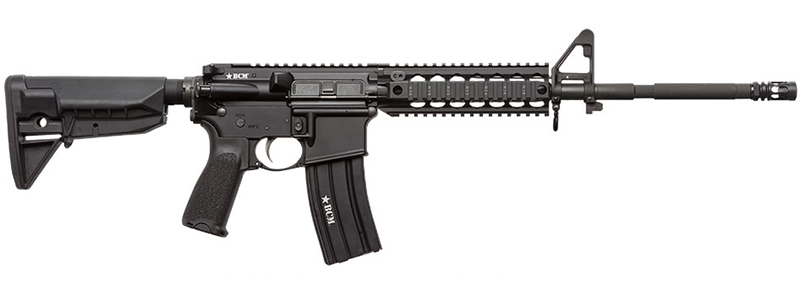
The Bravo Company M4 Carbine Mod 2 is a clone of the SOPMOD Block 2 package, with a 16-inch M4/HBAR profile barrel (phosphate finish and chrome lined) and fixed front sight base with a BCM A2-style compensator and free-float BCM Gunfighter quad rail handguard. The receiver is a flat-top with no backup sight, and BCM gunfighter furniture is included.
Street prices are around $1,500. However, the Mod 1 is available for a little less (usually about $200 less) with a BCM Gunfighter KeyMod handguard. All other parts are the same.
More Military Firearms:
- Why The Mauser C96 “Broomhandle” Still Looms Large
- Nagant Revolver: Unique Relic From Behind The Iron Curtain
- M1917 Enfield: The Unofficial U.S. Service Rifle
- Browning Automatic Rifle: The Gun That Changed the Infantry

Next Step: Get your FREE Printable Target Pack
Enhance your shooting precision with our 62 MOA Targets, perfect for rifles and handguns. Crafted in collaboration with Storm Tactical for accuracy and versatility.
Subscribe to the Gun Digest email newsletter and get your downloadable target pack sent straight to your inbox. Stay updated with the latest firearms info in the industry.

![Best Concealed Carry Guns In 2025 [Field Tested] Wilson Combat EDC X9S 1](https://gundigest.com/wp-content/uploads/Wilson-Combat-EDC-X9S-1-324x160.jpg)


![Best 9mm Carbine: Affordable PCCs [Tested] Ruger Carbine Shooting](https://gundigest.com/wp-content/uploads/Ruger-Carbine-Shooting-100x70.jpg)
![Best AR-15: Top Options Available Today [Field Tested] Harrington and Richardson PSA XM177E2 feature](https://gundigest.com/wp-content/uploads/Harrington-and-Richardson-PSA-XM177E2-feature-100x70.jpg)

I bought a Colt M4gery one Black Friday a few years back. I was with the wife at a big box store and saw it for $1100. I had the cash on me and wanted something lighter than an AK to lug around in the woods. Probably shouldn’t have, but always having more guns than brains, I dropped the mazoola. After passing the “instant” background check, the clerk escorted me (and IT) out to my car and I was the proud owner of yet another Colt AR15! Once at home I found 2-30 round mags in the box! Christmas Bonus!
The little Colt is a handy little carbine, light weight, shoots well, low recoil, reliable and reasonably accurate. IMO it’s a little “barky” compared to my 20″ rifle but that’s to be expected. If I didn’t already own it, I would buy it again. If called upon it would defend our lives in a tight place.
After I bought it, the prices on ARs dropped, some kind of price war between the plethora gun makers… so they are less pricey now (of course)… C’est la vie… I’ve got a Prancing Pony, and it will maintain value over the years I’m sure.
With military service and combat infantry training experience I love shooting rifles and deer hunting it’s one of the most enjoyable thrills, I mean feelings and of course all the memories shared with other soldiers and deer hunters, also with my carry I can also protect the family. Gun digest has great posts on rifles and pistols from one expert sharpshooter or marksman to another.